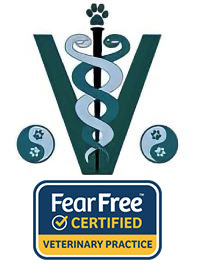Library
-
White willow bark is given by mouth and is used over the counter to treat pain and inflammation in cats and dogs. Give as directed by your veterinarian. Side effects may include stomach upset and skin rash. Do not use in pets that are allergic to it or aspirin, or in pets that are pregnant, nursing, or very young. It should be used cautiously in pets with certain medical conditions. If a negative reaction occurs, please call your veterinary office.
-
Dogs were built to chew. That is a fact. Bones can lead to a number of health problems from minor injuries to severe illness. Our job as pet parents, is to provide them with chewing options that do not put them in jeopardy. Happy chewing!
-
Cats will always lick, but it is sometimes embarrassing when they lick their private parts. Licking after eliminating is normal; however, if your cat licks more frequently, or you notice other signs such as discharge; swollen or red penis, vulva, or anus; pustules; discoloration of the skin; or if your cat strains to urinate, see your veterinarian for help. Appropriate medical therapy can reduce your cat's discomfort.
-
A cat’s ability to smell is far more advanced than ours. The Jacobson’s organ, located inside the nasal cavity, opens into the roof of the mouth behind the upper incisors and serves as a secondary olfactory system designed for chemical communication related to mating. Cats use their keen sense of smell, along with a visual assessment, to provide vital information about a new feline acquaintance. The way cats sniff rear ends can establish which of two cats is dominant and set the foundation of their relationship.
-
Turning around before bedtime has its origin mostly in evolutionary history where cat ancestors were practicing these habits for health or protection. These innate habits remain in their genetic code to this day but if your cat is seeming to be doing it excessively, it could be a sign of underlying medical problems, such as arthritis of neurological disorders. Contact your veterinarian if your cat appears to have difficulty settling down.
-
But whiskers are more than just facial enhancements. They serve an important function. Whiskers are finely tuned sensory equipment that guide a cat through daily functions. These specialized hairs aid vision and help a cat navigate the environment, providing additional sensory input, much like antennae on insects.
-
Burying of toys or food items by dogs goes back thousands of years as a means of preserving food and storing valuable or scarce food resources. Dogs today do it out of ancestral habit and as a means of resource protection. If you notice that your dog seems to be digging compulsively, contact your veterinarian.
-
Noses vary in size and shape in the canine world, but regardless of what they look like, they are important to survival. So pay attention to your dog’s nose to help him stay healthy. And enjoy those warm moist snuggles your dog’s nose provides you. A dry nose is not a guarantee of illness. Too much moistness could be a sign of a problem.
-
Whiskers serve many important functions in dogs with regards to sensory inputs. Whiskers help dogs navigate the world and detect changes in their environment. These are some of the most sensitive hairs on the dog's body.
-
As long as there are dogs, there will be howling. Whether it is occasional, constant, mournful, or exuberant, howling is part of normal canine communication. Depending on the situation, a howl can take on different meanings.


